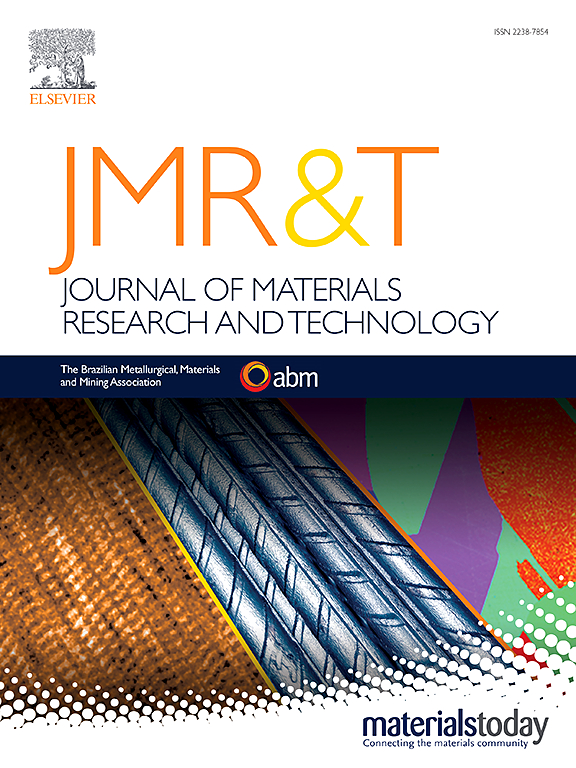Study on the small strain dynamic characteristics and microscopic mechanism of nano-silica modified lime soil
IF 6.6
2区 材料科学
Q1 MATERIALS SCIENCE, MULTIDISCIPLINARY
Journal of Materials Research and Technology-Jmr&t
Pub Date : 2025-06-10
DOI:10.1016/j.jmrt.2025.06.055
引用次数: 0
Abstract
Nano-silica (NS) possesses the characteristics of high specific surface area, high chemical activity and nanoscale dimensions. Incorporating an appropriate amount of NS into lime soil not only enhances its mechanical properties, but also contributes to resource conservation and environmental protection. This study investigates the small strain dynamic characteristics of nano-silica modified lime soil (NSLS) through resonant column test and examines its microscopic mechanism and pore changes by SEM, EDS, XRD, FTIR and MIP. The research findings indicate that with increasing confining pressure and curing age, the dynamic shear modulus G of NSLS gradually increases, while the damping ratio D gradually decreases. Furthermore, the fitting results from the Hardin-Drnevich model demonstrate that under different confining pressures, adding 0.4 % NS to lime soil yields the most significant improvement in stiffness, with the maximum dynamic shear modulus Gmax increasing by 34 %–45 % and the maximum damping ratio Dmax decreasing by 20 %–30 %. Additionally, SEM, EDS, XRD, FTIR and MIP test results reveal that NS promotes the generation of more hydration products in NSLS, which helps to reduce its porosity. In summary, this study illustrates how NS can enhance both mechanical properties and microstructure of lime soil while providing scientific evidence for its application in practical engineering.
纳米二氧化硅改性石灰土的小应变动态特性及微观机理研究
纳米二氧化硅(NS)具有高比表面积、高化学活性和纳米尺寸等特点。在石灰土中加入适量的NS,不仅可以提高石灰土的力学性能,而且有利于节约资源和保护环境。本研究通过共振柱试验研究了纳米二氧化硅改性石灰土(NSLS)的小应变动态特性,并通过SEM、EDS、XRD、FTIR和MIP分析了其微观机理和孔隙变化。研究结果表明:随着围压和养护龄期的增加,NSLS的动剪切模量G逐渐增大,阻尼比D逐渐减小;此外,Hardin-Drnevich模型的拟合结果表明,在不同围压下,添加0.4% NS对石灰土的刚度改善最为显著,最大动剪切模量Gmax提高34% ~ 45%,最大阻尼比Dmax降低20% ~ 30%。SEM、EDS、XRD、FTIR、MIP等测试结果表明,NS的加入促进了NSLS水化产物的生成,从而降低了NSLS的孔隙率。综上所述,本研究说明了NS如何提高石灰土的力学性能和微观结构,为其在实际工程中的应用提供了科学依据。
本文章由计算机程序翻译,如有差异,请以英文原文为准。
求助全文
约1分钟内获得全文
求助全文
来源期刊

Journal of Materials Research and Technology-Jmr&t
Materials Science-Metals and Alloys
CiteScore
8.80
自引率
9.40%
发文量
1877
审稿时长
35 days
期刊介绍:
The Journal of Materials Research and Technology is a publication of ABM - Brazilian Metallurgical, Materials and Mining Association - and publishes four issues per year also with a free version online (www.jmrt.com.br). The journal provides an international medium for the publication of theoretical and experimental studies related to Metallurgy, Materials and Minerals research and technology. Appropriate submissions to the Journal of Materials Research and Technology should include scientific and/or engineering factors which affect processes and products in the Metallurgy, Materials and Mining areas.
 求助内容:
求助内容: 应助结果提醒方式:
应助结果提醒方式:


